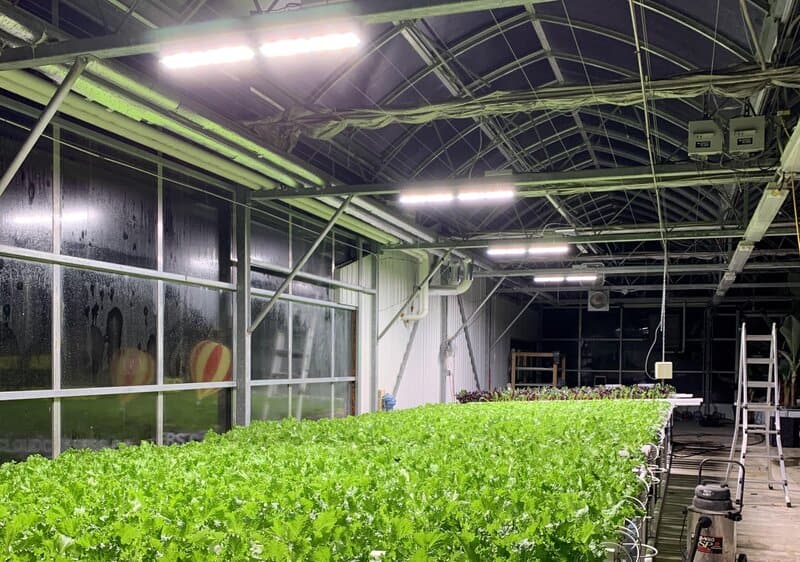
The use of LED grow lights is carried out in accordance with the light saturation point and light compensation point of different plants. The light saturation point and light compensation point of plants vary with crop species and cultivation conditions. Some negative plants reach light saturation in less than 10,000 lux, while positive plants need tens of thousands of lux to reach saturation. Some four-carbon (C4) plants are often not fully saturated at noon in direct sunlight (about 100,000 lux). Generally, the light saturation point of three-carbon (C3) plants is lower than that of four-carbon (C4) plants. The light compensation point and light saturation point of several common crops are listed below:
| Plant Species | Plant Type | Light Saturation Point | Light Compensation Point | Optimal Light Duration | Light Type |
| Eggplant | Light-loving plants | 40,000-50,000 lux | 2,500 lux | 11-13H | Medium light |
| Tomato | Light-loving plants | 70,000-80,000 lux | 2,500 lux | 12-14H | Medium light |
| Chili | Light-loving plants | 30,000-40,000 lux | 2,000 lux | 10-12H | Medium light |
| Cucumber | Light-loving plants | 50,000-60,000 lux | 2,500 lux | 8-11H | Short light |
| Lettuce | Light-loving plants | 50,000-60,000 lux | 2,000 lux | 10-12H | Medium light |
It can be seen from the above that if the plants are grown in the environment due to the lack of sunlight, such as basements and balconies, they are grown. It is necessary to replace sunlight with artificial light (plant light) to provide the energy required for photosynthesis for plant growth, and the light intensity of the required light source must reach the light compensation point required by the plant to grow normally.
Below the light compensation point, the plant grows leggy or grows slowly; above the light saturation point, the photosynthetic rate no longer increases, and the phenomenon of photoinhibition occurs, resulting in wasted light energy. The light intensity is between the light saturation point and the light compensation point. Using led plant growth lights to grow melons, fruits and vegetables can promote photosynthesis of plants, shorten the growth cycle, and go to market 10-20 days earlier, increasing production and income by 20-80%, and promoting flowering and promoting Fruit, improve fruit set rate, anthelminthic and disease resistance, reduce deformed fruit, improve the taste, sweetness, quality and appearance of fruit. This is why the use of plant growth lights has no effect. If the temperature, humidity, water, fertilizer, and carbon dioxide concentrations are normal, the biggest reason is that the light intensity emitted by the LED grow lights is lower than the light compensation point of the plant. There are 2 reasons for the low light intensity:
1. The luminous intensity of the LED plant lamp itself is low, and the solution needs to replace the lamp, or increase the lamp
2. The LED plant light itself has high luminous intensity, but the distance between the lamp and the plant is too high, so that when the light intensity reaches the surface of the leaf, it is lower than the light compensation point of the plant. Solution Lower the height of the luminaire.
KINGROWLIGHT specializes in the production of led grow lights, which can give you the most professional spectrum matching and the best cost-effective grow lights for the crops you plant, so that you can maximize the economic benefits of using led grow lights at the lowest cost.
The intensity of photosynthesis of any crop is closely related to the intensity of light. The trend of the photosynthetic intensity changing with the intensity of light is similar. When the light increases, the photosynthesis increases, and when the light decreases, the photosynthesis decreases. But when the light is enhanced to a certain extent, the photosynthetic intensity will no longer increase, and the light intensity at this time is the light saturation point of photosynthesis. When the light weakens to a certain limit, the photosynthetic intensity cannot be measured (the photosynthetic intensity and the respiration intensity are exactly equal, and the ratio is 1), and the light intensity at this time is called the photosynthetic light compensation point.
